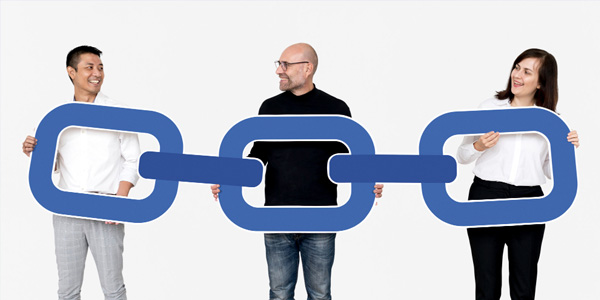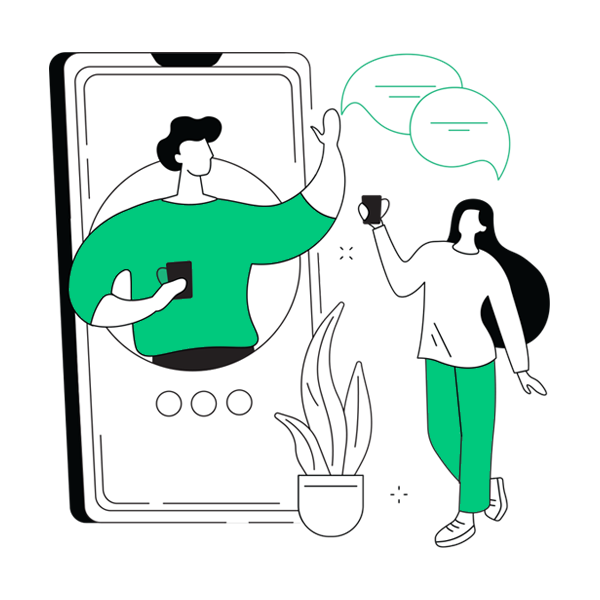
A buyer persona is a representation of your ideal customer’s preferences and behavior. Reduce your marketing costs and increase your sales and ROI by paying attention to your customers’ behavior.
When customers are happy with a brand, they’ll want to share their experience with their friends and family. The recommendations help boost your trust with your business prospects and can get you more sales.
However, to make any customer happy, you should know who your customers are and their user behavior. A buyer persona is a semi-fictional representation of your ideal customer based on market research and real data about your existing customers.
It is a profile that depicts your target customer. Buyer personas describe who your ideal customers are, the challenges they face, and how they make decisions.
But buyer personas are more than just numbers and graphs that shed a little light on a company’s clientele by breathing life into them, creating model purchasers guiding them how they should market their products to increase sales, generate and maintain consumer interest and how to grow their business by addressing the needs of their consumers.
Buyer personas provide tremendous structure and insight for your business. As a result, you will attract the most valuable visitors, leads, and customers. They assist businesses in understanding and empathizing with their customers to acquire and serve them more effectively.
Putting your customers’ needs first can help improve relationships with your audience and retain customers. This is because customers like to feel like they’re being given special treatment.
90% of consumers found personalization appealing, while 80% said they’d be more likely to do business with a personalized approach.
Creating buyer personas help in clearly defining your target customers and create marketing messages that will resonate with them. As every customer or prospect cannot be targeted individually, a customer persona helps represent each segment of your customer base. This makes it simpler to filter different customer groups and craft more potent and penetrative marketing strategies.
How should your business use buyer or audience personas?
To drive sales and increase your business, you need to market to the right audience. Depending on various customer characteristics, adjustments need to be made to your pitch and your marketing tactic. This means that you need to create buyer personas to identify the most relevant customers for your business and then use these personas to create targeted marketing campaigns that are highly suitable for your target customers.
Marketing personas can be effectively leveraged to craft compelling, targeted messages that speak directly to each customer group.
Different tools can target different target groups based on their age, work profile, industry, pain points, goals, buying patterns, geographical location, and gender.
Understanding your buyer personas allows you to understand the best ways to reach each customer group. Marketing personas can be a useful testing ground for evaluating your business decisions. For example, if a new product feature does not meet the needs of your buyer personas more effectively, it is advisable to reevaluate your plan, no matter how exciting it might sound or appear.
How to create buyer personas in 5 simple steps?
Your buyer personas need to be based on real-world information, not gut instinct. There is a difference between the people who want to buy from you and people you wish would buy from you. That means you need to start with some in-depth research. Well-defined buyer personas make it easier to create personalized experiences for your customers. This is crucial because personalization can have a massive impact on people’s purchase decisions.
“According to Accenture, 75% of consumers are more likely to buy from retailers that recognize them by name and know their purchase history.”
This data is used to provide purchase recommendations to them accordingly.
Extensive and comprehensive audience research
Learn about your existing customers in terms of age, location, language, education, income, buying behavior, interests and activities, and life stage (such as new parenthood or retirement).
Information from customer records, and supplementing that information through email surveys, online surveys, focus groups, or even customer interviews would also enhance and complement the research offering to prospective customers and whether they are reaching the same target audience as yours.
Are they doing something more useful than you are missing out on?
Communication through websites and social media tools can provide useful information about people interacting with your brand online.
Facebook Audience Insights provides incredibly valuable and detailed information.
Knowing about your competitors can be useful in terms of understanding what they are on.
Extensive and in-depth research helps you drive more sales by creating accurate buyer personas. Thorough and precise research helps create a valuable database that can and should be utilized in designing the company’s marketing campaigns.
Identify customer pain points
This essentially means The problems or hassles your potential customers are facing and trying to solve? What barriers do they face in reaching their goals?
Possible solutions: Engage in some social listening and social media sentiment analysis. Setting up search streams to monitor mentions of your brand, products, and competitors gives you a real-time look into what people say about you online.
You can identify why your customers love your products or which parts of the customer experience are not working?
Keeping abreast with your customer service team to find out what kinds of questions they get the most help to identify patterns about which groups tend to face different challenges.
Identifying customer goals
Having a comprehensive understanding of your customers is the key to achieving core business goals. This involves determining what your customers seek from your product and then trying to match their expectations/needs with your product. Their feedback gives you an insight into their ultimate goal and needs.
Understand how your brand can help
Once your customers’ pain points and goals are known, efforts can be directed towards designing your campaign and products accordingly.
Turn your research into buyer personas
Using all the information gathered through all the research, the same should be carefully analyzed to identify common customer personas. Your campaigns and products should be designed based on these.
How to use buyer personas to convert potential customers into buyers?
Buyer personas help you craft messages by thinking of buyer personas as real people. While designing your campaign, you must keep in mind what the prospective customer’s queries are, what social media tools they use, the language they use, their interest groups and should be able to answer or address the fact as to how your campaign would help or be beneficial to them.
Each persona will have different and specific problems and hence would require unique and different solutions. So the marketing campaign should be designed so that it answers all such questions and should address the questions particular to each type of persona.
All decisions about your business and your marketing strategy should revolve around the personas you are catering to. This will help you build a bond with the real customers they represent, boosting sales while creating brand loyalty and trust.
Though it takes a lot of time to research and build customer personas, the payoff makes it all worthwhile. Switching to persona marketing makes it easier to focus your marketing budget and resources on providing valuable content to your prospective customers.
Understanding the customers’ desires, habits, pain points, and other things can help you influence their purchase decisions. Building a persona of a typical customer helps them understand what they want from you as a business, giving you the power to connect with them more effectively in your marketing campaigns.
Read More: Refine your Digital Marketing Strategy during Covid 19 for business growth


